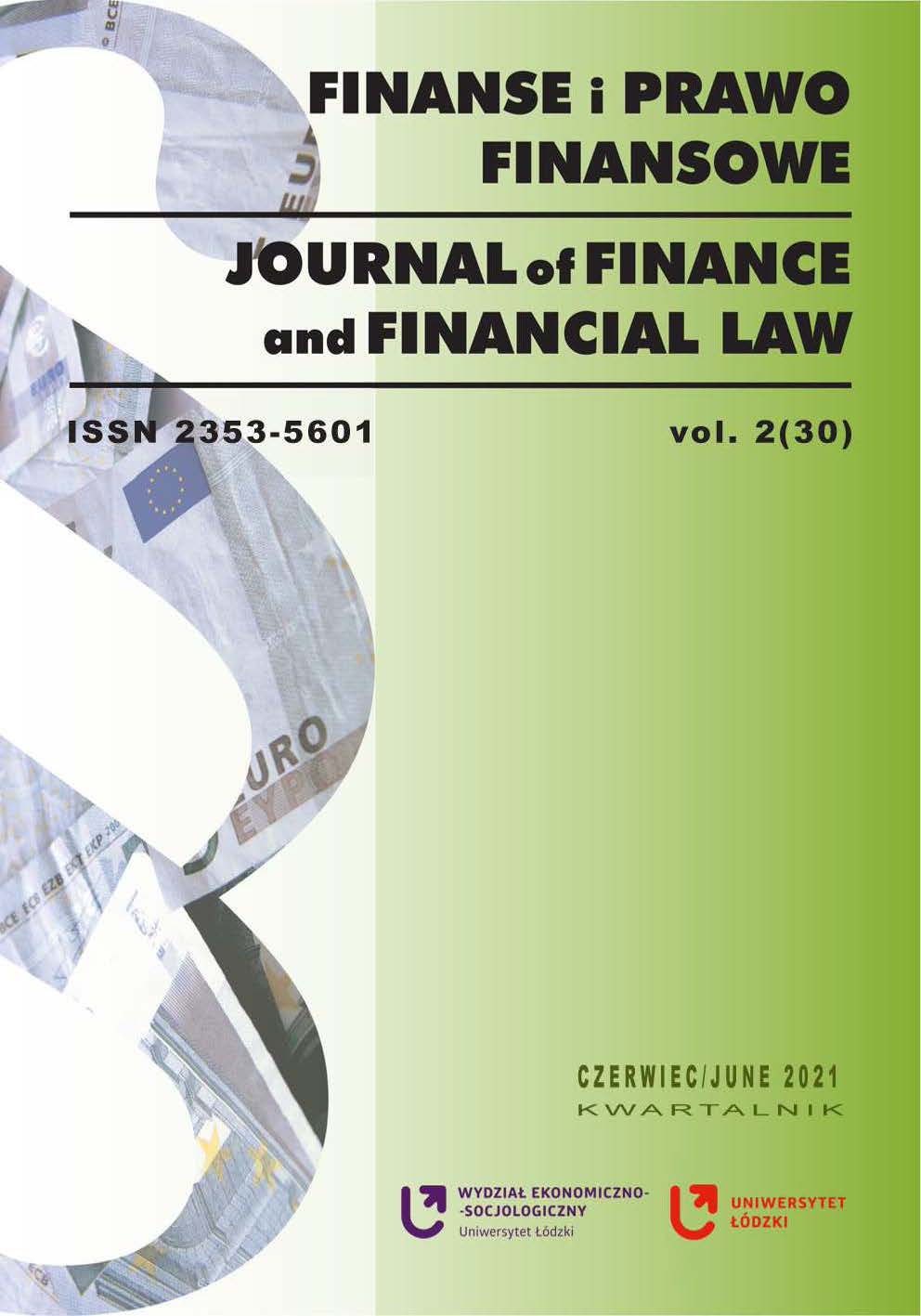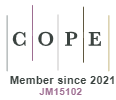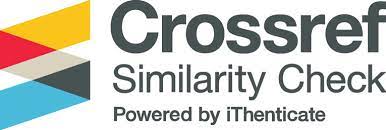Evaluation of the Level of Financial Inclusion among Businesses from the Next 11 Group of Countries
DOI:
https://doi.org/10.18778/2391-6478.2.30.07Keywords:
financial inclusion, Next 11 countries, availability of financial servicesAbstract
The purpose of the article. The article aims to evaluation which factors are a barrier to financial inclusion in the Next 11 countries. The research aim of this article is to assess the differences in the degree of financial inclusion of business entities from the Next 11 group of countries by taking into consideration the use of basic banking services such as bank accounts, credit lines and loans.
The hypothesis of the article. The authors put forward the hypothesis that in poorly developed countries, to which the Next 11 countries belong, there are considerable areas of financial exclusion among businesses, in particular among small and medium-sized enterprises. In most of these countries, corporate financial inclusion rates are below the global average.
Methodology. The article applies the following research methods: a critical analysis of the literature in the theoretical part; and desk research analysis (that is analysis of data gathered) in the empirical part. Research into the degree of financial inclusion in Next 11 countries was conducted on the basis of indicators of the use of banking services by enterprises operating in Next 11 countries.
Results of the research. The level of companies’ financial inclusion depends above all on the degree to which they make use of bank accounts and bank loans. Countries in different geographical locations vary in terms of economic and technological development and social awareness, which impacts on their participation in the use of banking services.
Analysis of the basic indicators of banking services availability showed that there is a widespread problem of financial exclusion for companies in Next 11 countries. The proportion of companies possessing a current bank account was below the average of all countries worldwide. However, the worst situation exists in the field of financing business activity using foreign capital. Credit lines there are used on average by less than 25% of companies. However, Next 11 group countries do not see the lack of available credit lines as the main barrier to development.
Downloads
References
Agyekum, F.K., Reddy, K., Wallace, D. and Wellalage, N.H. (2021). Does technological inclusion promote financial inclusion among SMEs? Evidence from South-East Asian (SEA) countrie, Global Finance Journal, https://doi.org/10.1016/j.gfj.2021.100618 [Accessed: 10.06.2021].
Google Scholar
DOI: https://doi.org/10.1016/j.gfj.2021.100618
Anderloni, L. and Carluccio, E. (2006). Access to Bank Accounts and Payment Services. In: L. Anderloni, E. Carluccio and M. Braga, New Frontiers in Banking Services: Emerging Needs and Tailored Products for Untapped Markets. Berlin: Springer Verlag.
Google Scholar
DOI: https://doi.org/10.1007/978-3-540-46498-3
Blancher, N. (2019). Financial Inclusion of Small and Medium-Sized Enterprises in the Middle East and Central Asi, IMF 2019.
Google Scholar
DOI: https://doi.org/10.5089/9781484383124.087
Bogdanowicz, J. (2010). SKOK-i przeciw wykluczeniu finansowemu. Gazeta Bankowa, 6.
Google Scholar
Carbo, S., Gardner, E. and Molyneux, P. (2004). Financial Exclusion. Basingstoke: Palgrave Macmillan.
Google Scholar
Enterprises Surveys, The World Bank, https://www.enterprisesurveys.org/en/data/exploretopics/finance [Accessed: 8.05.2020].
Google Scholar
Financial inclusion and new means of payment, (2013). European Foundation for Financial Inclusion, May.
Google Scholar
Farazi, S. (2014). Informal Firms and Financial InclusionStatus and Determinant. Policy Reaserch Working Paper, 6778.
Google Scholar
DOI: https://doi.org/10.1596/1813-9450-6778
Frączek, B. (2017). Edukacja finansowa jako determinanta wzrostu włączenia finansowego. Podejście zintegrowane. Katowice: Wydawnictwo Uniwersytetu Ekonomicznego w Katowicach.
Google Scholar
G20 Principles for Innovative Financial Inclusion, Global Partnership for Financial Inclusion, https://www.gpfi.org/publications/g20-principles-innovative-financial-inclusion-executive-brief [Accessed: 28.08.2020].
Google Scholar
Ghassibe, M., Appendino, M. and Mahmoudi S.E. (2019). SME Financial Inclusion for Sustained Growth in the Middle East and Central Asia. IMF Working Paper, 19/209.
Google Scholar
DOI: https://doi.org/10.5089/9781513509112.001
Jain, M., Naz, S.S. and Mathur, T.N. (2017). Financial inclusion: it's impact on Indian banking industry. International Journal of Research in Commerce & Management, 8(5).
Google Scholar
Karpowicz, I. (2014). Financial Inclusion, Growth and Inequality: A Model Application to Colombia. IMF 2014.
Google Scholar
DOI: https://doi.org/10.2139/ssrn.2504953
Kempson, E. and Whyley, C. (1999). Kept out or Opted out? Understanding and Combating Financial Exclusion. Policy Press. Bristol.
Google Scholar
Maciejasz-Świątkiewicz, M. (2013). Wykluczenie finansowe i narzędzia jego ograniczania. Opole: Wydawnictwo Uniwersytetu Opolskiego.
Google Scholar
Mitręga-Niestrój, K., Puszer, B. and Szewczyk, Ł. (2017). Globalny kryzys finansowy a wybrane kraje Next 11. Warszawa: CeDeWu.
Google Scholar
Polasik, E., Huterska, A. and Meler, A. (2018). Wpływ edukacji formalnej na włączenie finansowe w zakresie usług płatniczych. „e-mentor”, 1(73).
Google Scholar
DOI: https://doi.org/10.15219/em73.1336
Rasheed, R., Siddiqui, S.H., Mahmood, I. and Khan, S.N. (2019)., Financial Inclusion for SMEs: Role of Digital Micro-Financial Services. Review of Economics and Development Studies, 5(4).
Google Scholar
DOI: https://doi.org/10.26710/reads.v5i3.686
Sankharaj, R. (2015). Financial Inclusion: A Critical Assessment of its Concepts and Measurement. Asian Journal of Research in Business Economics and Management, 5(1).
Google Scholar
DOI: https://doi.org/10.5958/2249-7307.2015.00002.X
Schiffman, L.G. and Kanuk, L.L. (2010). Consumer Behavior: Global Edition. London: Pearson Higher Education.
Google Scholar
The World Bank, (2014), Global Financial Development Report 2014, Financial Inclution, http://documents.worldbank.org/curated/en/225251468330270218/pdf/Global-financial-development-report-2014-financial-inclusion.pdf [Accessed: 17.10.2020].
Google Scholar
DOI: https://doi.org/10.1596/9780821399859
Włączenie finansowe w Polsce, (2014). Microfinance Centre, grudzień 2014, s. 3, mfc.org.pl/wp-content/uploads/2016/04/Research_Włączenie-Finansowe-w-Polsce-raport-MFC.pdf [Accessed: 17.10.2020].
Google Scholar
Ziemba, M., Świeszczak, K. and Marcinkowska, M., Wykluczenie finansowe osób 50+ w kontekście dostępnej oferty bankowej, www.knfpan.pan.pl/images/Wykluczenie_finansowe_osób_50_w_kontekście_dostępnej_oferty.pdf [Accessed: 22.02.2020].
Google Scholar
Downloads
Published
How to Cite
Issue
Section
License

This work is licensed under a Creative Commons Attribution-NonCommercial-NoDerivatives 4.0 International License.














